What are Backpacks Made of (2024 Material Guide)
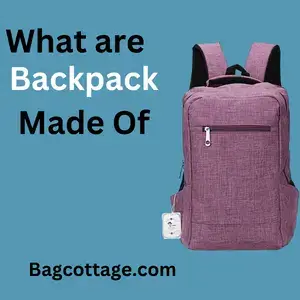
The backpack is one of the most important pieces of gear for students, travelers, sportsmen, etc. It can hold everything that an individual needs to take with them, from clothes to food to water. But the question is, what are backpacks made of?
Generally, most backpacks are made of raw materials of fabrics such as cotton, canvas, Nylon, and polyethylene. And these materials are very durable and fascinating and people love to use them. However, in some cases, manufacturers also combine some of the materials and feature sturdy and fashionable bags.
This guide post will provide a comprehensive overview of the different materials used in making backpacks and their advantages and disadvantages. I’ll also discuss what components and elements go into making one type of bag perfect for you.
Table of Content
What are Backpacks Made of? (Everything You Need To Know About The Materials)
With so many materials available, it’s hard to decide what will work best for your needs. Some of the most common choices are polyester or cotton canvas because they’re lightweight but also durable enough. Jansport backpacks are mostly made from polyester, canvas, etc.
There is some best waterproof backpack material that is most used in backpack making.
1. Nylon Fabric Material
In the modern world, Nylon is one of the most useful synthetic fibers. The first-time Nylon was launched in 1930, truly changed the world. Nylon is a polymer, meaning it is a plastic that has a molecular structure of a large number of similar units bonded together.
Nylon is water-resistant material; therefore, many things are made of nylon material, like umbrella jackets and backpacks, etc.
These days waterproof backpacks are very famous in the world. Nylon material maximizes the age of the backpacks. Also, a nylon-made backpack also protects your valuable things like a laptop, tablet, and books from rain when you are going on a rainy day.
So Nylon backpacks are popular for the reason that it is strong, durable, water-resistant, and tear-resistant.
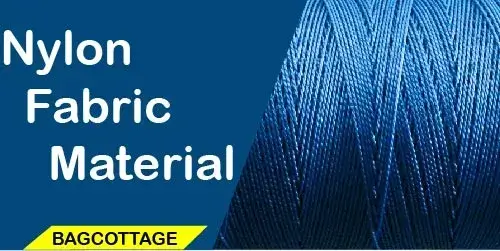
Ripstop
Ripstop is a type of nylon fabric, that uses a special reinforcing technique that makes them resistant to tearing and ripping. Moreover, it is a famous and popular material that is used by many companies and brands. It is used very commonly in camping and hiking backpacks.
This popular ripstop fabric is used in Yacht sails and spinnakers, hot air balloons, kites, free-flight models, parachutes, and hovercraft skirts.
High-quality campaign equipment such as lightweight tents, sleeping bags, and camping hammocks tend to use ripstop to reduce the wear on their fabrics.
Ballistic Nylon
Ballistic Nylon is a thick, tough nylon fabric used for several purposes. The term ballistic nylon originates from the fabric’s intended function, protecting its wearers from flying debris and fragmentation caused by bullet and artillery-shell impacts.
The original specification for ballistic Nylon was an 18-ounce nylon fabric made from 1050 denier high tenacity nylon yarn in a 2×2 basket weave.
Today the term is often used to refer to any nylon fabric that is made with a “ballistic weave,” typically a 2×2 or 2×3 basket weave. It can be woven from nylon yarns of various deniers such as 840 deniers and 1680 deniers. Denier refers to the weight, not the strength of the fabric.
Advantages
There are some advantages to Nylon.
- Some advantages of Nylon
- It is resistant to fungi, insects, and animals
- Nylon stands in different temperatures
- Is heat set
- Water-resistant
- It is light in weight
- It melts instead of burns
- Durability
Disadvantages
There are some disadvantages to Nylon.
- Molded sections are High shrinkage
- It also has pollution problems
- It has no stability
- Also, it does not absorb water well
2. Polyester Fabrics
Polyester also has some great features, and most manufacturers use it in the construction of the best backpacks. These polyester-made backpacks are super durable water-resistant and tear-resistant. It also does not react to many chemicals and dries very soon. It is also strong and lightweight.
Many backpacks for school, college, travel, and hiking are made of polyester material. Polyester fabrics are not as durable as compared with nylon fabrics.
The Polyester fabric has high ultraviolet resistance, so if you are doing work outside, hiking, or doing some activities that expose you to continuous sun, then I recommend using a polyester backpack.
The polyester-made backpack is cheap in rate and has a low price compared to the Nylon-made backpack; if you can not afford a pricey backpack, you must use a polyester backpack.
Most JanSport backpacks are made of polyester fabrics.
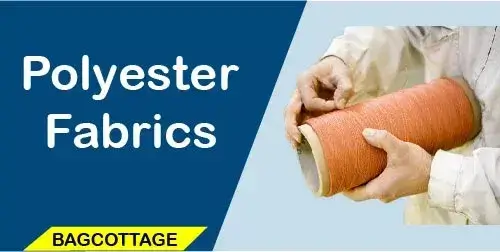
Advantages
There are Some essential advantages of polyester.
- Polyester is a strong fabrics
- It is more flexible
- It dries quickly
- Also, it is light in weight
- It is completely water-resistant
- Durability
Disadvantages
There are some disadvantages of polyester
- Polyester is temperature-sensitive
- Subject to dye migration
- Polyester is not as breathable
3. Canvas Fabric
Canvas fabric is one of the best and most highly durable fabric materials. It is used for making tents, backpacks, marquees, shelters, sails, handbags, electronic device cases, shoes, and other products for which are require sturdiness. Moreover, modern canvas is usually made of cotton or linen along with polyvinyl chloride simply shortly called PVC.
As we mentioned, the canvas uses cotton in its production process, so it is heavy compared to Nylon and polyester-made backpacks. It isn’t used in hiking and campaign. But nowadays some other material is also used in canvas which becomes lighter but still heavy. Due to a variety of other materials, it’s durable and used for a long time.
In the old days, backpacks were made of high-quality canvas fabric, which was not waterproof. After construction, wax-coated them to make them water-resistant. In old war moves and films, soldiers mostly used canvas-made backpacks for carrying their belongings.
Due to these drawbacks and limitations, canvas backpacks are still used in these modern days, particularly fashion backpacks for children and women made from these materials. Moreover, another benefit of cotton canvas backpacks is that it’s affordable, and everyone can easily buy them.
Advantages
There are some advantages of canvas fabric
- Waterproof and Windproof
- Sturdy
- Color Retention
- Accepts Treatments
- Durability
Disadvantages
there are some disadvantages of canvas material
- Canvas fabric is more expensive than other materials
- It can be scratchy on the skin
- Canvas fabric is not breathable
- It is a bit expensive
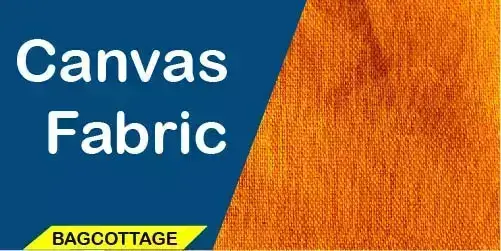
4. Polypropylene
Polypropylene (PP) is a thermoplastic polymer made by combining polypropylene monomers. It was first polymerized by a pair of scientists Hogan and Robert Banks- in 1951.
Polypropylene is a very widely used plastic, and you will see everything from carpets to ropes, even on paper. Polypropylene has a high melting point and high water and other chemical resistance. It is also a strong material, and it is tear-resistant.
As we said before, Polypropylene is a water-resistant material that dries quickly, so it’s high hydrophobic than polyester and Nylon.
It’s also a good insulator and does not transfer heat; therefore, its use in backpacks is making—usually, tote bags and drawstring backpacks are made of Polypropylene, and some backpack components are made from it.
Furthermore, polypropylene is less ultra velate resistant than other fabrics. Its common drawback is that under repeated or sustained exposure to the sun, Polypropylene will start to break down, and the color will fade; thus, you do not find it in most backpacks.
Advantage
- It is easy to clean
- It is anti-bacterial and not toxic
- Polypropylene backpacks are light in weight
- Moreover, it is waterproof and breathable
- It is environmentally resistant its melting point is 166 °C
- Polypropylene backpacks are more durable and long-lasting.
Disadvantage
- Polypropylene is often affected by UV degradation
5. Leather
Leather is one of the most popular durable and flexible materials—leather is created by tanning (tanning is a process that produces leather from animal skins) from animals. The date is back to 2200 BC to make leather from animal skins.
A variety of products are made from leather, including clothing, bags, footwear shoes, automobile seats, book bindings, fashion items, and furniture. Also, leather material is not only durable but very stylish as well—so many backpacks are made of leather.
Advantages
There are some advantages and disadvantages of leather backpacks.
- High-quality leather backpacks are durable and last for years.
- The look of Leather backpacks is also fashionable.
- Flexibility is one of the other advantages of a leather backpack. It stores those items that are big in size because of its flexibility.
Disadvantages
I mentioned some disadvantages.
- Leather backpacks are heavy because the leather material is so heavy as compared to other materials.
- Leather backpacks need more care to maintain their quality.
- It can’t be washed in the washing machine.
- Leather bags are easily affected by a change in temperature.
- The leather is not water-resistant.
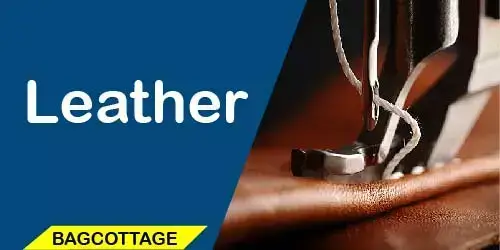
6. Poly Vinyl Chloride (PVC) Fabric
PVC is a kind of material called polyvinyl chloride (PVC). These materials are also used widely for backpacks. It is a multipurpose material and is used in many other products.
PVC material is water-resistant, tear-resistant, and also flame resistant. It’s a durable material. It can add color, waterproofing, and durability to backpacks.
The advantages and disadvantages of polyvinyl chloride (PVC) pipes are
Advantages
- PVC material is durable and everlasting so, don’t worry about a long-lasting problem
- It is light in weight
- Costs less than a metallic pipe
Disadvantages
- Prone to break on impact above the permissible limit
- It is easy to get cheated while buying PVC pipes due to a lack of knowledge among the common public.
- In the case of boring plumbing pipes are used which is a different category than PVC pipes.
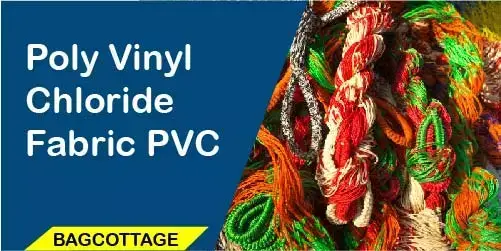
Cordura
Cordura is another type of backpack material. It is a very strong and durable material. It is created and designed by DuPont for its products because it is a water-resistant, durable, abrasion-resistant fabric for backpacks and luggage.
These days Cordura is used as a brand of material. So their fabrics consist of a range of durable Polyester and Nylon products that are trusted all over the world.
Straw
Straw is one of the oldest and most popular materials for backpack making. Moreover, these materials are commonly used today for beach bags, like totes or crossbody bags.
FAQs | What are Backpacks Made of
Q1. Which backpack material is best?
There is no definitive answer to this question as it depends on several factors, including the purpose for which you are using your backpack and what type of environment you will be traveling in.
Some popular backpacking materials include nylon and cotton, both of which are lightweight and durable. Other materials that can be used include leather or waxed canvas, which offer increased protection against rain or other elements.
Q2. What is the school bag made of?
School backpacks are typically made from a variety of materials, including nylon, cotton, and leather. Backpack manufacturers often design specific school backpack models to best meet the needs of individual students and schools.
Q3. How do backpacks get made?
When backpack manufacturers create a new backpack model, they first develop a design based on customer feedback. Next, the manufacturer creates prototypes of the backpack to test in various environments and conditions. After testing is complete, the manufacturer produces large quantities of the finalized backpack models for sale to consumers.
Conclusion
There are many different types of backpack materials in the world, as we mentioned in this article what are backpacks made of? The best backpack has qualities like durability, comfortability, water-resistant, tear-resistant, lightweight, etc. So if you are looking for real information about a backpack, then this article is best for you.
Of these materials, Nylon and Polyester are the most popular and have the best qualities and advantages. But Nylon and polyester backpacks are a bit more expensive than other materials backpacks.






